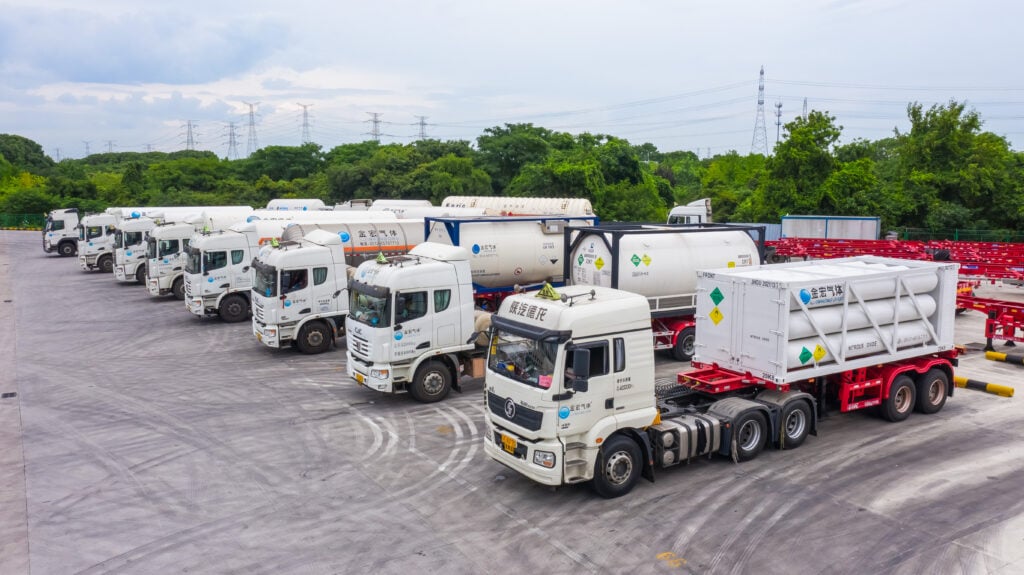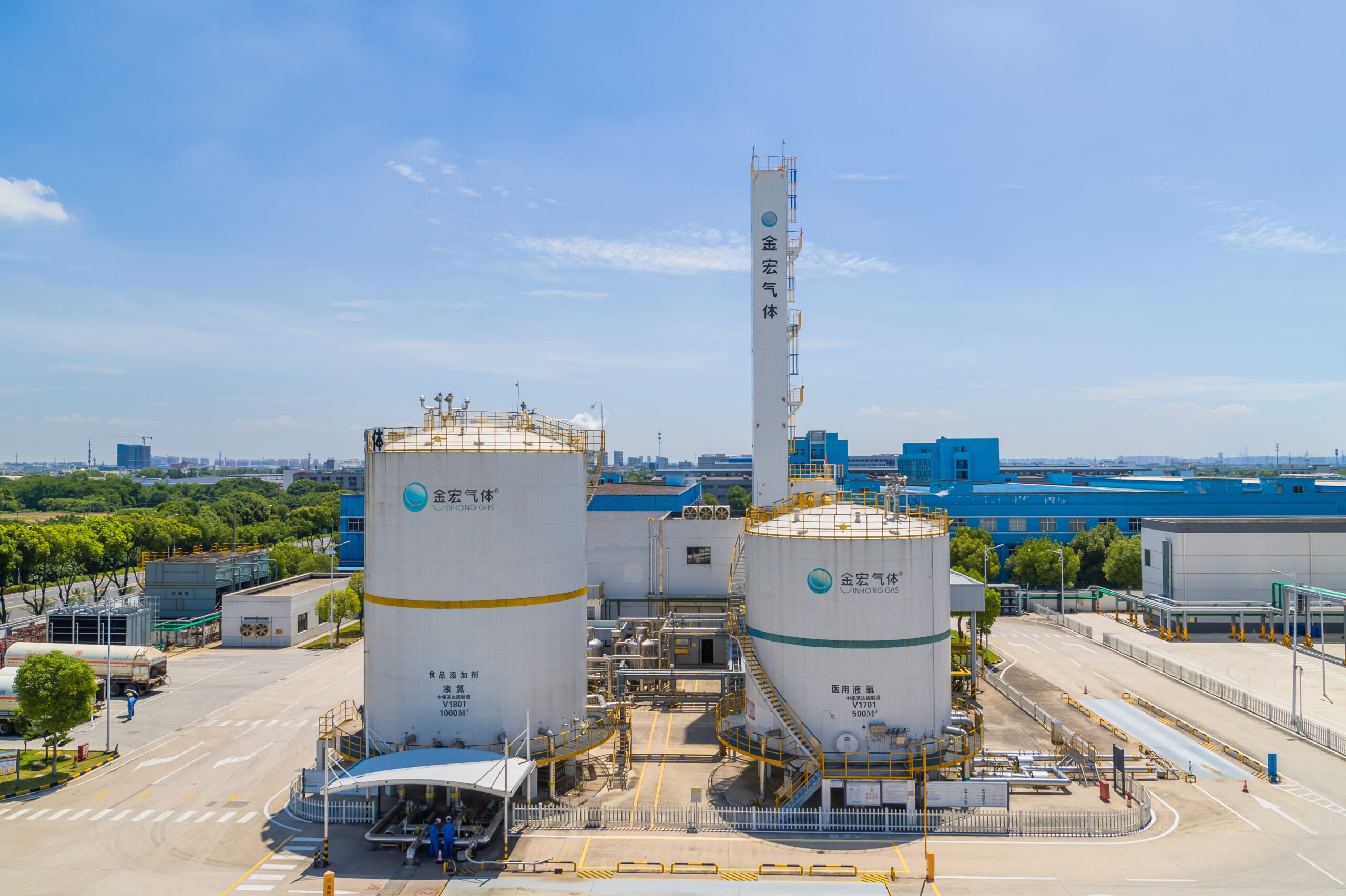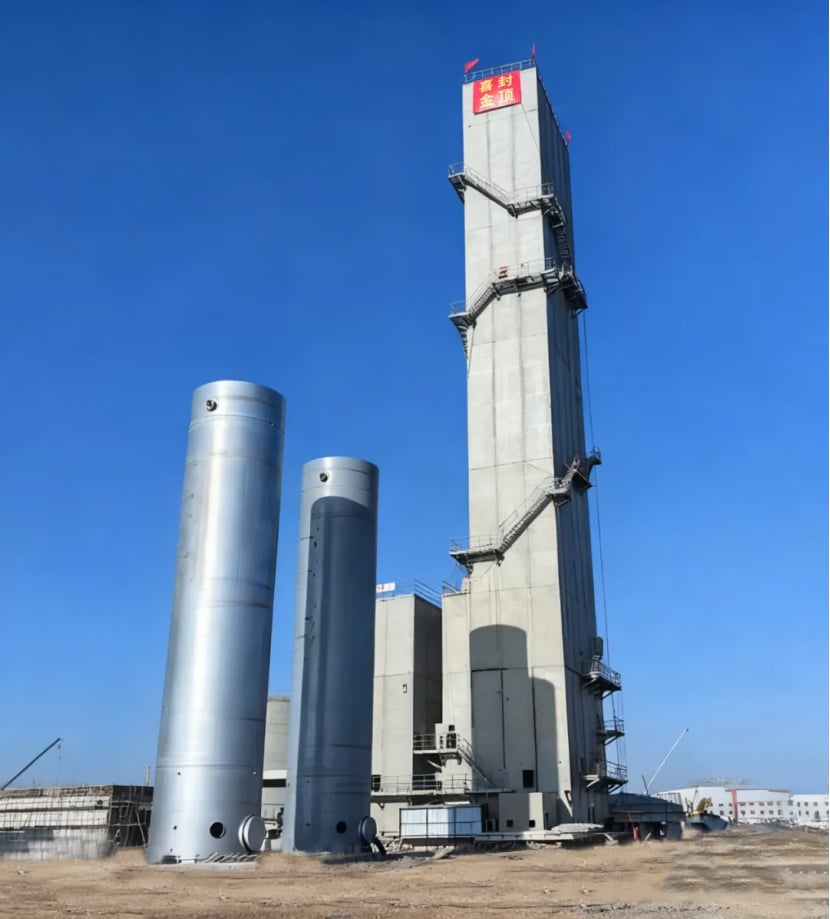Industrial Applications
Currently, industry is the largest application sector for hydrogen-based energy in China. Hydrogen is a critical raw material and is widely used in the production of ammonia, methanol, petroleum refining, and metallurgy. With the growing emphasis on carbon neutrality, the industrial use of hydrogen is expected to expand rapidly.
Low-Carbon Applications of Hydrogen in Key Sectors
| Sector | Application Areas | Main Technologies Involved | Low-Carbon Impact / Potential |
|---|---|---|---|
| Industry | Ammonia synthesis, Methanol production, Petrochemicals, Metallurgy | Green hydrogen production, biomass-to-methanol, hydrogen metallurgy | Significant CO₂ emission reduction; critical for industrial decarbonization |
| Transportation | Road transport, Railways, Aviation, Shipping | Hydrogen fuel cells, Methanol fuel, Hydrogen combustion engines | Green alternatives to fossil fuels; supports transition to low-carbon mobility |
| Power | Generation, Grid transmission, Load regulation, Energy storage | Hydrogen co-firing in gas turbines, Electrolysis, Hydrogen pipelines, Fuel cells | Enhances grid flexibility; provides long-term energy storage and decarbonized power options |
1. Ammonia Synthesis
Ammonia synthesis is the largest single consumer of hydrogen globally, accounting for over 37% of hydrogen use. Ammonia serves as a primary feedstock for nitrogen-based fertilizers and as an important intermediate in various industrial processes. In the chemical sector, ammonia is used to produce amines, dyes, explosives, synthetic fibers, and resins. In the electronics industry, high-purity ammonia is applied in plasma-enhanced chemical vapor deposition for integrated circuits. In food processing, it functions as a pH regulator and nutrient additive.
Producing one ton of ammonia typically requires 0.18 tons of hydrogen and 0.82 tons of nitrogen. While nitrogen can be obtained easily from air separation, hydrogen is traditionally sourced from fossil fuels like coal and natural gas (commonly known as gray hydrogen). Looking ahead, green hydrogen produced via renewable-powered electrolysis is expected to become the main supply source due to its low carbon footprint and high purity.

2. Methanol Production
Methanol is another major application of hydrogen. As a fundamental chemical feedstock, methanol is used to produce olefins, formaldehyde, acetic acid, dimethyl ether, and other derivatives. It finds widespread applications in chemicals, textiles, pharmaceuticals, pesticides, electronics, and food processing.
The production of olefins from methanol, a process known as MTO (methanol-to-olefins), is cost-competitive compared to traditional naphtha cracking, now accounting for approximately 55% of methanol consumption. Long-term, the use of green methanol—a zero-carbon variant derived from biomass or renewable hydrogen combined with CO₂—offers a promising decarbonization pathway for the chemical industry.
3. Petrochemicals
Hydrogen plays a vital role in refining processes such as hydrocracking and hydrotreating, which improve the quality of heavy oils and enhance refinery output. Presently, hydrogen used in petrochemicals primarily comes from fossil fuels or industrial byproducts. However, the shift to green hydrogen holds significant potential for lowering emissions in this sector.
4. Metallurgy
Hydrogen can substitute carbon as a reducing agent in metallurgy. The two main hydrogen metallurgy pathways include:
- Hydrogen-enriched blast furnace: Injecting hydrogen or hydrogen-rich gas into blast furnaces has shown a potential carbon reduction of 10–20%, although its scalability is limited.
- Gas-based direct reduction: Using a mix of hydrogen and carbon monoxide in shaft furnaces can cut CO₂ emissions by over 50%, making it a more viable method.
The steel industry is a key contributor to China’s carbon emissions, responsible for over 60% of global steel sector emissions and roughly 15% of national emissions. Traditional ironmaking using coal accounts for around 70% of total process emissions. Replacing carbon with hydrogen in reduction reactions is seen as a critical step toward decarbonizing steel production.
Transportation Applications
Replacing fossil fuels with cleaner alternatives is vital for reducing emissions in transportation. Hydrogen-based fuels are increasingly applied across road, rail, air, and maritime sectors, supporting the transition to a low-carbon future.
1. Road Transport
Hydrogen applications in road transport include fuel cell vehicles (FCVs) and hydrogen-powered internal combustion engines. FCVs are well-suited for heavy-duty, long-range, and fixed-route operations. China has prioritized commercial hydrogen vehicles—such as buses, logistics trucks, and tractors—over passenger cars. As of 2022, hydrogen-powered heavy trucks accounted for 0.35% of total sales. With advances in hydrogen infrastructure and technology, wider adoption is expected.
Methanol also presents an attractive alternative fuel. It can be used as a gasoline additive or in converted diesel engines. Its advantages include liquid state at ambient conditions (easy to transport), clean combustion, and improved engine efficiency—up to 20% higher than gasoline. China has built a comprehensive methanol vehicle ecosystem, including standards, technology chains, and supply networks, positioning it for large-scale deployment.
2. Rail Transport
Hydrogen fuel cells offer a low-emission power source for trains, eliminating the need for costly rail electrification. Although hydrogen trains are still in the trial phase, notable progress includes:
- Germany’s first commercial hydrogen train with 1,000 km range.
- China’s first hydrogen hybrid locomotive, capable of hauling over 5,000 tons continuously for 24.5 hours.
- The world’s first hydrogen refueling station for heavy rail, built in China.
However, given China’s already high electrification rate in railways, hydrogen’s role may remain supplementary.
3. Aviation
Due to weight and energy density constraints, electrification is not practical for long-haul aviation. Hydrogen offers an alternative via hydrogen fuel cells or combustion engines, though the latter faces design challenges due to differing fuel properties.
Hydrogen-powered aircraft are promising for short to medium distances. For long-haul flights, sustainable aviation fuels (SAFs) remain essential. SAFs, derived from non-fossil sources, can reduce lifecycle emissions by 65–85%. These fuels can be produced from bio-oils or biomass gasification combined with green hydrogen.
Countries including the U.S., U.K., and EU members have already launched strategic plans for green aviation. Hydrogen is expected to play a key role in enabling these decarbonization targets.
4. Maritime
The International Maritime Organization targets at least a 30% CO₂ reduction from shipping by 2030 and net-zero emissions around 2050. Hydrogen-based fuels—mainly fuel cells and methanol—offer significant potential.
China has begun developing hydrogen-powered vessels, primarily for inland and coastal applications. In 2023, the country’s first hydrogen fuel cell demonstration ship, Three Gorges Hydrogen Boat No.1, made its maiden voyage.
Green methanol is also gaining traction internationally due to its compatibility with existing ship engines. Maersk alone is projected to require 6 million tons of green methanol annually by 2030. China’s shipbuilding industry is actively developing methanol-compatible engines and refueling systems, supported by national technical standards.
Power Sector Applications
Hydrogen-based energy can be utilized throughout the power system—from generation to transmission, consumption, and storage.
- Generation: Blending hydrogen into gas turbines or ammonia into coal plants reduces emissions at the source.
- Transmission: Hydrogen pipelines can complement ultra-high-voltage electricity transmission over long distances.
- Consumption: Electrolytic hydrogen production serves as a flexible load, enabling demand-side response.
- Storage: Hydrogen can be converted back to electricity using fuel cells, offering a long-duration energy storage solution.
About Jinhong Gas
As a leading supplier of industrial gases in China, Jinhong Gas is committed to supporting the transition to low-carbon energy across industries. With a comprehensive portfolio of high-purity hydrogen, ammonia, methane, and specialty gases, we serve clients in petrochemicals, electronics, metallurgy, energy, and environmental protection. Our green hydrogen initiatives, including investment in water electrolysis technology and renewable-powered gas plants, enable our partners to achieve their decarbonization goals. At Jinhong Gas, we strive to deliver safe, efficient, and sustainable gas solutions to power the future of clean industry.



